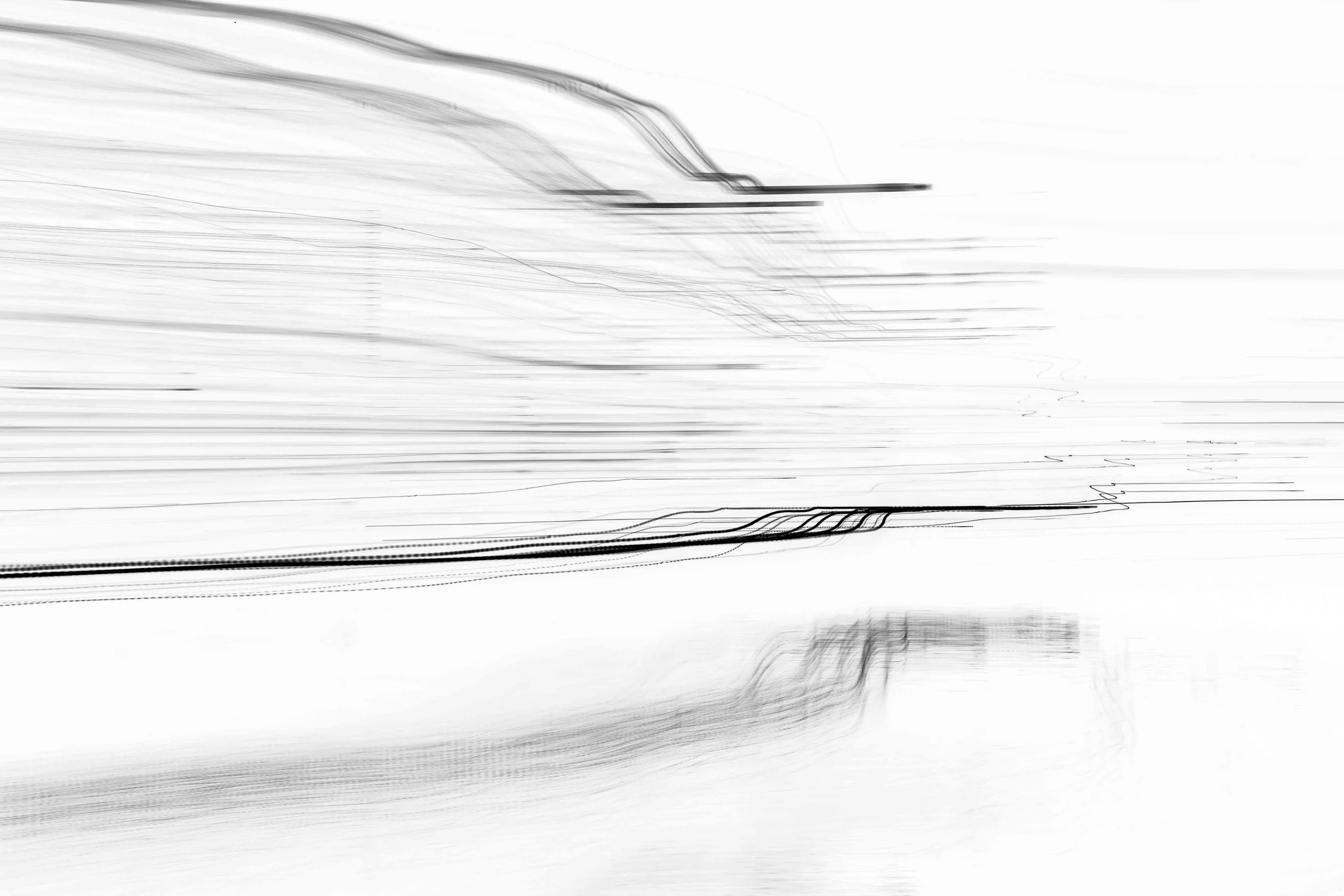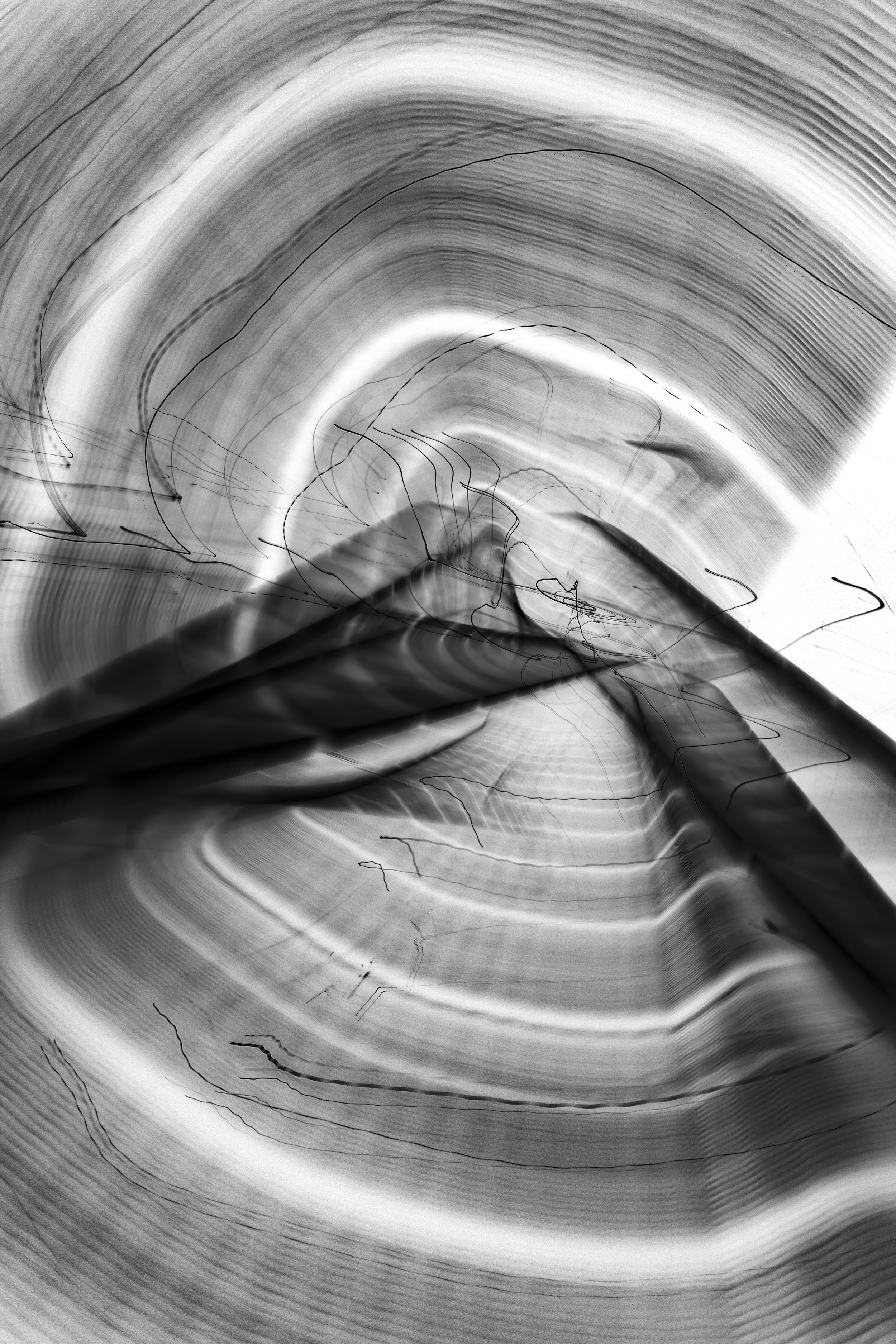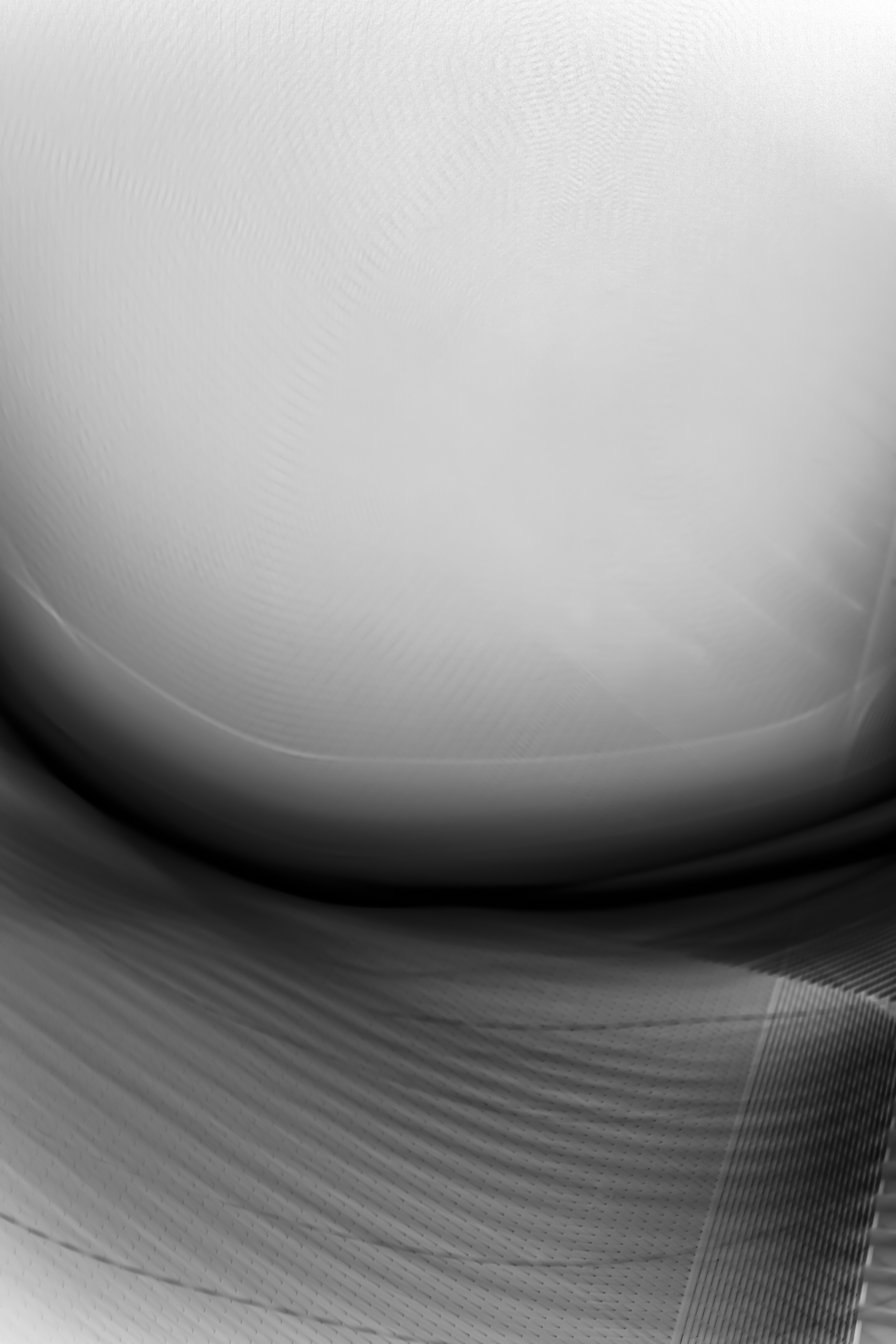
“The Empty Spaces: Glide”
The Empty Spaces: Glide extends my long-term exploration of absence, architecture, and temporality into a new temporal register. Where the earlier series Empty Spaces: Personal Absolute Space Point sought to still silence and frame absence as a character in itself, Glide introduces movement, allowing silence to drift, structures to soften, and emptiness to reveal its own currents.
The project is grounded in my ongoing method of Inverse Chrono-Spatial Axis Shift (ICSAS) — a photographic technique that combines long exposure with intentional camera movement, later inverted to destabilise our habitual perception of space and time. ICSAS collapses chronology into singular frames, producing images that function as “temporal fossils,” condensed traces of architectural memory and light. In Glide, this method evolves into a moving form. The video does not simply freeze these temporal fossils but instead allows them to unfold in real time, producing a sensation of drift — as if memory itself were gliding past us.
This shift from the still image to video is not merely technical. It is conceptual: Glide transforms the static voids of Empty Spaces into fluid thresholds. The rigid geometry of built structures begins to dissolve; surfaces bleed into one another; light stretches and curves across the frame. What once appeared immovable becomes permeable, reminding us that architecture is not a fixed container of life but a stage on which time performs its continuous passage.
At the heart of the work lies the idea of the “personal absolute space point” — an inner coordinate of stillness that remains constant even as the external world shifts. During the pandemic, when urban silence became uncanny, I sought to locate this point through architectural absence. With Glide, I return to that anchor but place it within motion. Silence here is not static but drifting; it has rhythm, direction, and flow. The viewer is invited not to dwell in absence, but to move with it — to feel how memory slides, how light glides across perception, and how even emptiness is never entirely still.
The aesthetic vocabulary of Glide emerges from contrasts: presence and absence, light and shadow, sharpness and blur. Inversion continues to play a central role, revealing that what we see as void is never empty but filled with latent resonance. The motion of the video enacts what the photographs could only suggest: the glide between perception and its inversion, between inner stillness and outer movement, between time’s fragmentation and continuity.
The Empty Spaces: Glide is both a continuation and a departure. It grows directly out of my earlier publications and installations, yet seeks a new rhythm: a cinematic meditation on motion within stillness. The work positions itself as a visual threshold — an invitation for the viewer to pause, follow the quiet trajectories of light, and inhabit the subtle drift of memory through space.
In a world increasingly saturated with speed and noise, Glide proposes an alternative mode of attention: to see emptiness not as absence, but as a space of becoming, a passage in motion, a silence that moves.
To extend this encounter beyond the still image, I invite you to invert the colours of you phone.
To invert colours on your Android phone, navigate to Settings > Accessibility > Color and motion > Colour inversion and enable "Use colour inversion". On iPhones, go to Settings > Accessibility > Display & Text Size and toggle on "Smart Invert" or "Classic Invert".
Then, by opening a camera on your phone, which will lead to an interactive digital component of the project.—where time shifts, motion unfolds, and the viewer becomes an active participant in navigating spatial memory. The digital space mirrors the themes of the physical work, offering new ways of witnessing and interpreting the unseen.
COLLABORATORS
-

SIMON SOLOVEICHIK
-

MANAS SAHA
-

GOVIND ANAND